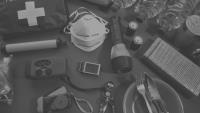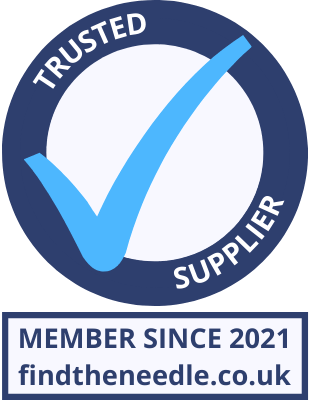 Add My Company
Add My Company
Sign In

Choking
Choking is extremely common and very frightening, but in most cases, with the right help, the casualty will make a full recovery.
Babies can choke on anything small enough to fit through a toilet roll.
What to do if a Baby is Choking
Look in the baby?s mouth. If there is something obvious, remove it with your fingers.
Never be tempted to put your fingers down a baby?s throat or finger sweep the mouth. This can push the obstruction further down or cause swelling.
Lie the baby across your forearm and support across your legs, supporting them under the chin. Use the flat of your hand to give a firm back blow between the shoulder blades.
Give up to five back blows and check between each one to see if the blockage has cleared.
If they are still choking, call the emergency services and start chest thrusts straight away.
For a baby under a year give up to 5 firm chest thrusts, holding them with their head lower than their stomach and checking to see if the obstruction has cleared.
What to do if your baby is unconscious and not breathing ? CPR
First check Danger, Response, open their Airway and check for Breathing. If you are not absolutely sure whether or not they are breathing properly, you should start CPR.
Carefully tilt the head and lift the chin to roughly a horizontal position to take the tongue off the back of the airway. Then give 5 rescue breaths to re-oxygenate them. Babies and children are much more likely to have had a breathing problem first and had a Respiratory Arrest, their heart will stop later.
Seal your mouth around their mouth and nose and blow into them gently with a puff of your cheeks.
Make sure their chest rises each time, if it doesn?t, you probably haven?t opened the airway sufficiently, tilt it a little further and try again. But do not overextend it
If they start to gurgle when you breathe into them, you will need to briefly turn them onto their side and empty the vomit from their mouth, before continuing with the breaths.
Push down by a third of their depth with two thumbs or fingers
Push hard and fast on the centre of their chest, roughly between the nipples at a rate of about 120 beats per minute, roughly 2 per second
After about 30 compressions?you will need to give them 2 more short sharp breaths and then continue with the compressions again. 30:2:30:2:30:2?
Keep going
When you push on the chest ? you are being the heart
When you breathe into them ? you are being the lungs
If you are on your own, you should perform 1 minute?s CPR before phoning for an ambulance (5 breaths, 30:2, 30:2 is about a minute). Continue until the paramedics arrive.
Febrile Convulsions and seizures
If your small child or baby starts fitting or having a seizure:
Maintain their safety. Remove any objects from around them to prevent injury
Cushion their head using a blanket or pillow. However, it?s important to not restrain them
Time how long the fit lasts
Loosen any tight clothes/blankets and remove any excess clothing if it is possible to do so.
Do not try to pick them up or restrain them and do not be tempted to put anything in their mouth whilst they are fitting.
They should start breathing again extremely quickly and spontaneously, but ensure you are checking continually and are ready to give CPR if necessary.
When the seizure has finished it is likely the baby will appear confused and drowsy. If they are unresponsive, put them into the recovery position.
If the baby remains conscious during the seizure, it is important to ensure their safety and to reassure them.
Head injuries
Call 999 or 112 if a baby or child is injured and lose consciousness, even momentarily.
Or if they:
Won?t stop crying
Are unable to walk normally
If the child has not lost consciousness, is alert and behaving normally after the head injury:
Reassure the child and remain calm.
Control any bleeding with direct pressure using a clean, non-fluffy cloth.
Apply a wrapped ice pack or instant cold pack to the injured area for 10 minutes. This will reduce bruising but has no effect on the severity of any internal head injury.
Observe the child carefully for the next 24 hours. If you notice any worrying signs (see below), get medical help immediately.
If the incident has occurred close to bedtime or naptime and your child falls asleep soon afterwards, check-in continually to look for anything unusual.
Worrying signs:
Twitching limbs
Disturbances in colour
Disturbance of breathing.
It?s fine for your child to go to sleep following a minor head injury, however, do not confuse falling asleep with losing consciousness!
Burns
Burns can be particularly serious for small children and babies. They haven?t yet developed the reflex to move away from something hot and their skin is up to 15 times thinner than that of an adult. Damage tends to be more severe because they have a smaller body surface area which means the burn often covers a larger proportion of their body.
Knowing what to do can radically reduce the amount of pain and scarring experienced. It can also mean a full recovery without even needing to be admitted.
How to Treat a Burn
Extremely carefully, remove loose clothing covering the burn.
Do not take clothes off if there is any risk the skin has stuck to them or if the skin has blistered.
Put the affected area under cool running water for at least 10 minutes (ideally much longer). Remember you are cooling the burn and not the casualty, so try and keep the water running over just the burnt area.
Keep the rest of the casualties as warm and dry as possible and watch for any signs of shock.
Phone an ambulance, particularly if a large area is affected, or if the skin is broken or blistered. Keep the area under the water while you wait for the ambulance to arrive.
A burn is measured using the size of your hand, which is roughly equivalent to 1% of your body. Therefore, a burn measuring just the size of a 50p piece or a postage stamp can be very serious for a baby or small child. Burns to the hands, face, feet, genitals, airways or a burn that extends all the way around a limb are particularly serious.
Never:
Remove anything that has stuck to a burn
Touch a burn
Burst blisters
Apply any creams, lotions or fats
Apply tight dressings, tapes or use anything fluffy
Always get burns assessed by a medical professional.
Bleeding
Young babies only have about a pint of blood in their bodies and so even losing equivalent to a small cup of blood could be extremely serious for them.
Lie the baby down ? to manage shock and prevent them from feeling dizzy and faint
Examine the area to see if there is anything stuck in the wound ? if there is do not remove it
Elevate the bleeding area above the level of the heart to slow down the bleeding
Pressure ? apply direct pressure on the wound to stop the blood from coming out.
Keep them warm and get emergency help. If the baby is pale, cold, clammy and showing signs of shock, or if there is a lot of blood, help their circulation by lying them down and raising their legs. Elevate the bleeding wound and apply direct pressure to control the bleeding.
For more information on 6 essential first aid skills all parents should know talk to ABC Training Services Ltd
Enquire Now
List your company on FindTheNeedle.

